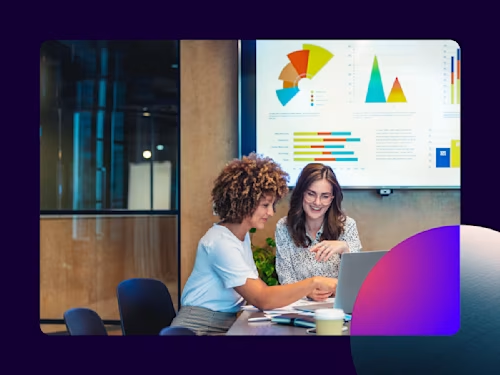
Contract Analytics Give Procurement Actionable Insights
See how procurement teams can use AI and contract analytics to better understand what is in their contracts across the organization.

Global procurement leaders are tasked with reporting on key vendor management metrics, which are often outlined in one or more contracts governing the vendor relationship. Yet extracting detailed business, risk and compliance data from contractual documents can be complex, time-consuming and expensive. It’s essential that you know what’s in all your procurement contracts and agreements at any point in time and in real time.
In this blog we look at how procurement teams can use AI and contract analytics to better understand what is in their contracts across the organization, as well as find opportunities to reduce costs and mitigate risk.
Manual contract management and decentralized storage create risk
The procurement contracts that you have in place to buy the products and services that you need to run your business can run into the hundreds of thousands for a large corporation.
Many companies manage their procurement contracts and agreements by signing them, filing them and storing them in manila folders or electronically in email or other information systems. The contracts can be in paper, in a variety of digital formats, in static PDFs or all three.
Without a centralized repository and effective contract analytics tools, you could be leaving money on the table, creating unnecessary compliance risk and increased operating costs through inefficient workflows.
A better way is to actively manage your company’s procurement contracts with AI and contract analytics.
Step one: Finding and standardizing existing contracts
Robust contract analytics solutions start by finding all your existing procurement contracts wherever they may be hiding in different systems, departments, and locations. Contract analytics tools crawl through all procurement contracts and put them in a single inventory or database.
The next step is to normalize and standardize variations in terminology used in your procurement contracts. A simple example is standardizing how your contracts identify cities or states or the names, titles and affiliations of parties to a contract. Is it New York or NY? Is it Bob or Robert? Is he an SVP or Senior Vice President? The normalization and standardization also applies to more sophisticated contract language, terms and clauses.
Finally, after standardizing terminology, you can create a model profile of each type of procurement contract that your company uses. It’s against that model profile all existing and future contracts and agreements will be judged, so to speak.
Step two: Mining more value from procurement contracts
AI-powered contract analytics solutions can help businesses understand what is in their contracts, by finding, filtering and analyzing agreements regardless of source location and current format.
Let’s say different departments in your company are buying different products or services from the same supplier. Each of those purchases has its own contract and contract terms. With a few clicks, you can run a program to identify all the contracts you have with that same supplier and negotiate with the supplier to get a bulk discount and the best terms across the different contracts. And you can do that the instant terms change, not when you do a quarterly or annual review. This creates more working capital for your company and gives you access to that capital more quickly.
Reducing your regulatory compliance risks
Robust contract analytics solutions can search for the presence and absence of common and complex procurement topics including specific statutory obligations (e.g., vendor cooperation with regulators), common points of risk analysis (e.g., data security) and key business metrics (e.g., early payment discounts). The clauses and metadata are automatically extracted, creating a profile for each contract which supports a full spectrum of analysis and digital workstreams (e.g. updating P2P/ERP systems).
This proactive approach to managing procurement contracts and agreements also greatly reduces regulatory compliance risks. It allows you to:
Check and update contracts and agreements for new regulatory requirements
Check and update contracts and agreements for regulatory requirements in different countries
This particular benefit also will improve the workflow between your procurement department and other departments that touch the contracts, particularly your legal department.
Workflow efficiencies and cost savings
Imagine reviewing all your procurement contracts for the best terms every time a price changes or a regulation changes and doing those reviews manually. It would be unimaginable. Yet, some companies do it. Many never get to it because it’s too time-consuming and too error-prone, and they miss out on AI-driven insights from procurement contracts which can deliver business value.
Hence, the third benefit of using smart technology to manage procurement contracts is operational efficiency. Searching disparate systems for contracts, normalizing and standardizing terms and terminology, checking contracts against model profiles, looking for more value and ensuring regulatory compliance all come with a few keystrokes. And the information you need is accurate and available in seconds or minutes, not weeks or months.
In addition to leveraging insights from your procurement contracts, you’re doing so more efficiently and in-house. Both drive down your contract management expenses, lowering your cost of doing business and adding to your bottom line.
Learn more about Docusign Intelligent Insights for procurement.

Related posts
Docusign IAM is the agreement platform your business needs


